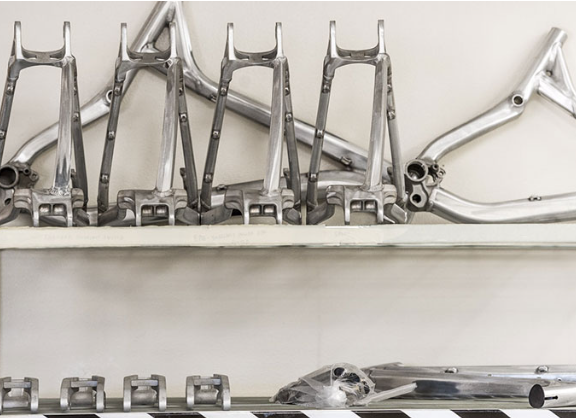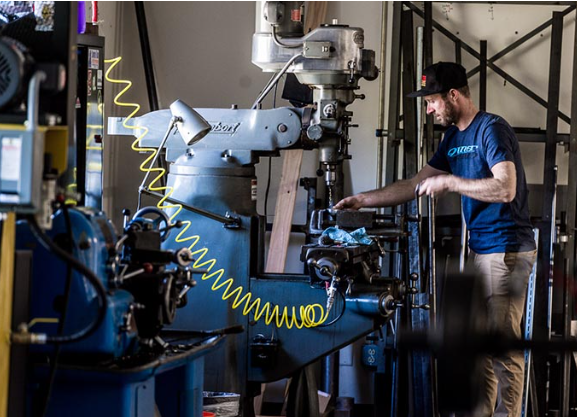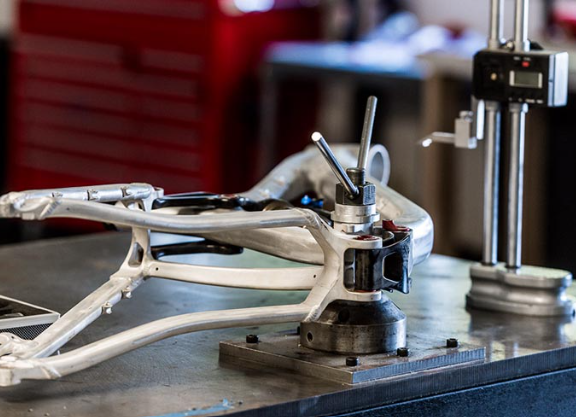PRODUCT DEVELOPMENT
How are Niners made, you ask?
Well, there are many steps in the process. Obviously, everything starts as a drawing by one of our engineers, then moves to a 3D computer model. These models can be manipulated, tweaked, and tested in pixel form before ever seeing the light of day.
But when the mood strikes and a new Niner bike moves from a twinkle in our eye to a real prototype, we have significant in-house R&D capability. Our ability to build and test prototypes in-house gives us a real edge. We can quickly identify areas of improvement or optimization. And we can take our models from the test bench out to the trails behind the office for immediate benchmarking.







Test Mules
These aren’t just boring, unpainted bike frames. No, no. These are test mules, the unsung heroes of the bike industry. Before we send a bike to production, we produce a small number of alloy, carbon, and 3D printed frames. These frames get poked, prodded and ridden into the ground because we want to verify the precision, geometry, and quality of each of our bikes.

Torsional simulation device
I know what you’re thinking, “Is that frame lifting weights?” Unfortunately, that’s not exactly what’s happening here. This is our torsional test device. We place weights on a series of linkages attached to a dummy crank arm to simulate rider pedal forces. We do this to determine overall frame stiffness through lateral deflection.

Alignment Table
It’s true what they say, size matters. Even if it’s a one-hundredth of a millimeter. We take the smallest measurements of our frames both pre and post-production to ensure the quality of our products. If we find any errors we go straight back to the factory to get it fixed.

Frame Drop Test
Go ahead. Hit that big jump. Before our bikes make it to your local bike shop or garage, it must comply with safety standards and pass rigorous (and painful-looking) drop tests.

Ultimate Strength Test
Sounds tough, right? If you’re a frame, it’s probably not the most fun thing, but if you’re an engineer or rider, it’s pretty damn important. The frame is equipped with a rigid steel fork and then a massive amount of pressure is applied at the base of the fork until the frame breaks. We measure the force needed to break the frame to ensure that it will not break even on the toughest trails.

Hardness tester
In theory, you could ride a road bike in a gravel race or a cross bike down a technical trail. But it would be a hell of a lot better to use a gravel bike for a gravel race and a RIP 9 RDO for a rowdy trail. You’d choose the right bike for the job. This hardness tester lets us choose the right materials for the job. Not all aluminum is created equal. Some alloys are harder or softer than others. We use this tool to make sure we are selecting the right materials for our bikes, bolts, and spacers so that you have the best ride possible.

